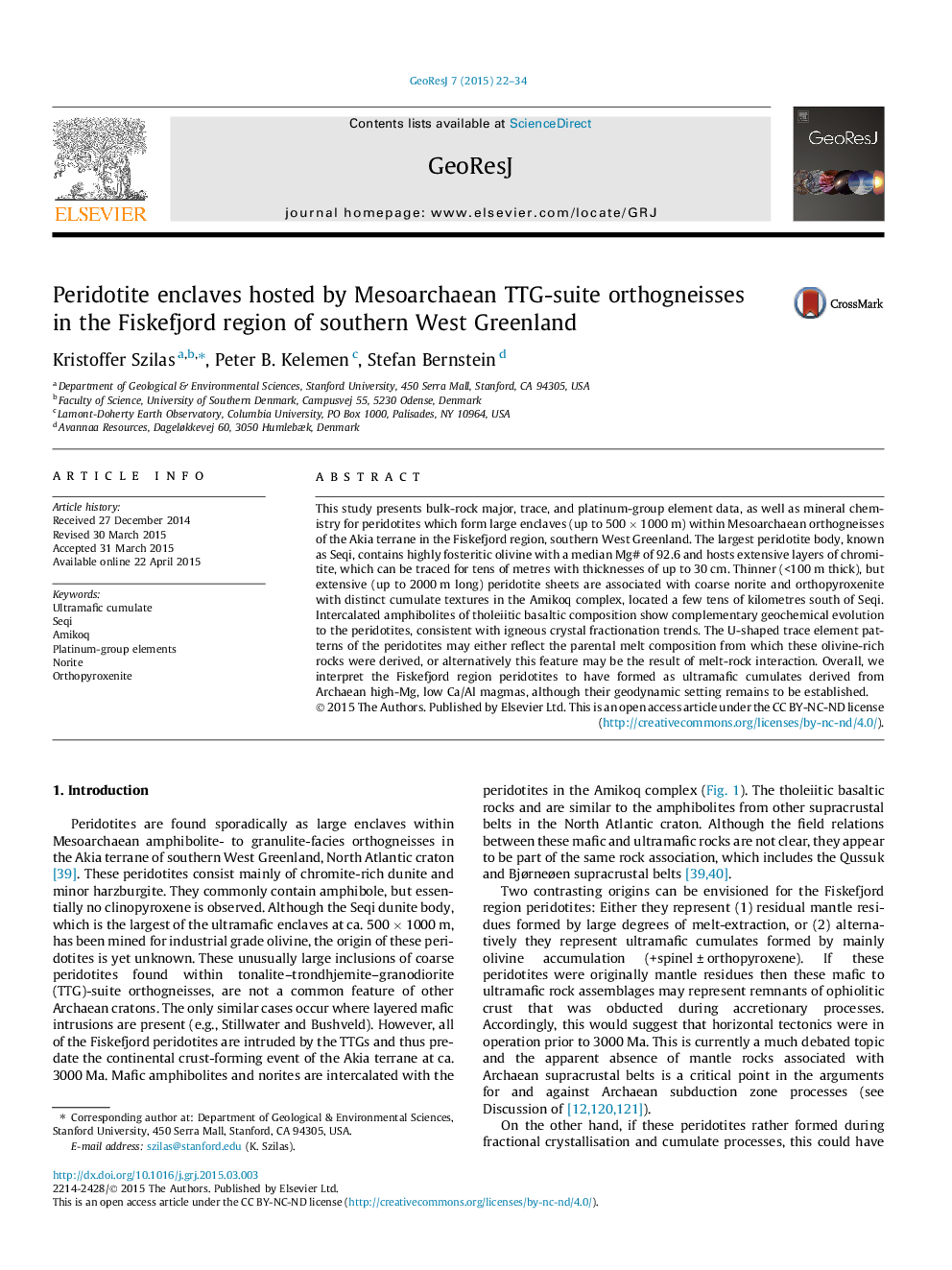| Article ID | Journal | Published Year | Pages | File Type |
|---|---|---|---|---|
| 4674477 | GeoResJ | 2015 | 13 Pages |
•Bulk-rock and mineral chemistry for Archaean peridotites is presented.•The peridotites form large (>100 m) enclaves within Mesoarchaean orthogneisses.•These peridotites likely represent cumulates derived from regional mafic rocks.•Dunite in the Seqi Olivine Mine is highly fosteritic (Mg# 91.1–93.7).•Negative Rh-anomalies may explain corresponding mineralisation in local norites.
This study presents bulk-rock major, trace, and platinum-group element data, as well as mineral chemistry for peridotites which form large enclaves (up to 500 × 1000 m) within Mesoarchaean orthogneisses of the Akia terrane in the Fiskefjord region, southern West Greenland. The largest peridotite body, known as Seqi, contains highly fosteritic olivine with a median Mg# of 92.6 and hosts extensive layers of chromitite, which can be traced for tens of metres with thicknesses of up to 30 cm. Thinner (<100 m thick), but extensive (up to 2000 m long) peridotite sheets are associated with coarse norite and orthopyroxenite with distinct cumulate textures in the Amikoq complex, located a few tens of kilometres south of Seqi. Intercalated amphibolites of tholeiitic basaltic composition show complementary geochemical evolution to the peridotites, consistent with igneous crystal fractionation trends. The U-shaped trace element patterns of the peridotites may either reflect the parental melt composition from which these olivine-rich rocks were derived, or alternatively this feature may be the result of melt-rock interaction. Overall, we interpret the Fiskefjord region peridotites to have formed as ultramafic cumulates derived from Archaean high-Mg, low Ca/Al magmas, although their geodynamic setting remains to be established.
